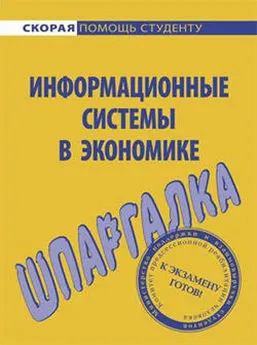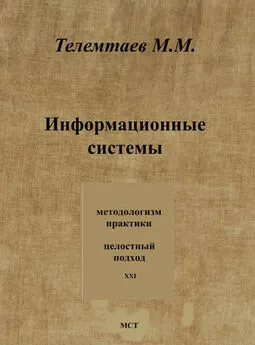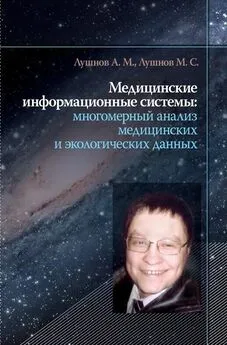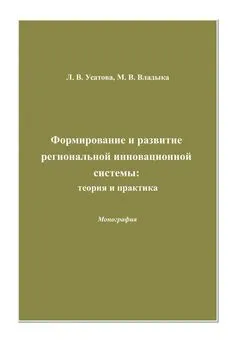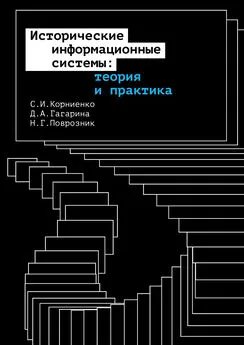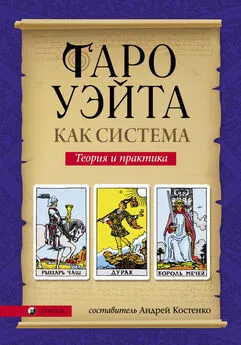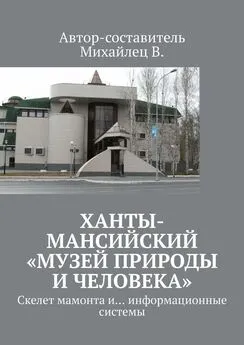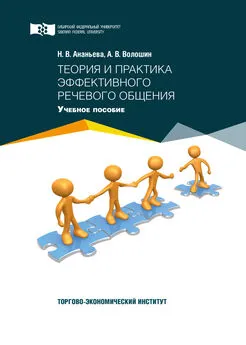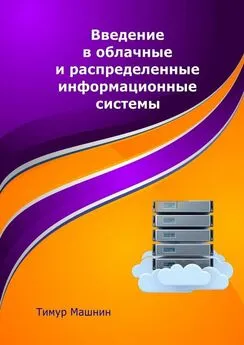Надежда Поврозник - Исторические информационные системы: теория и практика [litres]
- Название:Исторические информационные системы: теория и практика [litres]
- Автор:
- Жанр:
- Издательство:Литагент Высшая школа экономики
- Год:2021
- Город:Москва
- ISBN:978-5-7598-2321-6
- Рейтинг:
- Избранное:Добавить в избранное
-
Отзывы:
-
Ваша оценка:
Надежда Поврозник - Исторические информационные системы: теория и практика [litres] краткое содержание
Книга содержит результаты исследования теоретических и прикладных проблем создания и внедрения историко-ориентированных информационных систем. Это первое комплексное исследование по данной тематике. Одни проблемы в книге рассматриваются впервые, другие – хотя и находили ранее отражение в литературе, но не изучались специально.
Издание адресовано историкам, специалистам в области цифровой истории и цифровых гуманитарных наук, а также разработчикам цифровых ресурсов, содержащих исторический контент или ориентированных на использование в исторических исследованиях и образовании.
В формате PDF A4 сохранен издательский макет.
Исторические информационные системы: теория и практика [litres] - читать онлайн бесплатно ознакомительный отрывок
Интервал:
Закладка:
110. Boonstra O., Breure L., Doorn P. Past, Present and Future of Historical Information Science. Amsterdam, 2006.
111. Brier S. Where’s the Pedagogy? The Role of Teaching and Learning in the Digital Humanities // Debates in the Digital Humanities / ed. by M. K. Gold. Minneapolis: University of Minnesota Press, 2012.
112. Britt A., Perfetti C., Dyke J. V., Gabrys G. The Sourcer’s Apprentice: A Tool for Document-Supported Instruction // Knowing, Teaching and Learning History: National and International Perspectives. N.Y.: New York University Press, 2000.
113. Burkard B., Vogeler G., Gruner S. Informatics for Historians: Tools for Medieval Document XML Markup, and their Impact on the HistorySciences // Journal of Universal Computer Science. 2007. Vol. 14. № 4. P. 193–210 [Электронный ресурс]. URL: http://www.jucs.org/jucs_14_2/ informatics_for_historians_tools/jucs_14_2_0193_0210_burkard.pdf.
114. Carpenter G. A., Grossberg S. A Massively Parallel Architecture for a Self-Organizing Neural Pattern Recognition Machine // Computer Vision, Graphics, and Image Processing. 1987. Vol. 37. Issue 1. P. 54–115.
115. Dawson R., Bynghall S. Getting Results From Crowds: The Definitive Guide to Using Crowdsourcing to Grow your Business. Advanced Human Technologies Inc., 2011.
116. Denley P. Models, Sources and Users: Historical Database Design in the 1990s. // History and Computing. 1994. № 6. P. 33–44.
117. Digital Humanities in Practice / ed. by C. Warwick, M. Terras, J. Nyhan. L.: Facet Publishing, 2012.
118. Digital Humanities Pedagogy: Practices, Principles and Politics / ed. by B. D. Hirsch. 2012 [Электронный ресурс]. URL: https://www.openbookpublishers.com/product/161/digital-humanities-pedagogy-practices-principles-and-politics.
119. Drucker J., Kim D., Salehian I., Bushong A. Introduction to Digital Humanities. Concepts, Methods, and Tutorials for Students and Instructors. Course Book. UCLA, 2013 [Электронный ресурс]. URL: dh101. humanities.ucla.edu.
120. Edinger M. Seeking History. Te aching with Primary Sources in Grades 4–6. N.Y., 2000.
121. Fallgren P., Malisz Z., Edlund J. A Tool for Exploring Large Amounts of Found Audio Data // Proceedings of the Digital Humanities in the Nordic Countries 3rd Conference. Helsinki, Finland, March 7–9, 2018. P. 499–503 [Электронный ресурс]. URL: http://ceur-ws.org/Vol-2084/poster6.pdf.
122. Falser M., Juneja M. (eds.). ‘Archaeologizing’ Heritage? Transcultural En-tang lements between Local Social Practices and Global Virtual Realities. Heidelberg, N.Y.: Springer, 2013.
123. Feeney M., Ross S. Information Technology in Humanities Scholarship: British Achievements, Prospects, and Barriers. British Library R&D Report. 6097. 1993.
124. Georgopoulos A. 3D Virtual Reconstruction of Archaeological Monuments // Mediterranean Archaeology and Archaeometry. 2014. Vol. 14. No. 4. P. 155–164.
125. Graham S., Milligan I., Weingart S. Exploring Big Historical Data. The Historian’s Macroscope. S.l., Imperial College Press, 2015.
126. Gregory I. N. A Place in History: A Guide to Using GIS in Historical Research. Oxford, 2003.
127. Gregory I. N., Ell P. S. Historical GIS: Technologies, Methodologies, and Scholarship. 2007.
128. Gregory I. N., Geddes A. Toward Spatial Humanities: Historical GIS and Spatial History. 2014.
129. Guldi J., Armitage D. The History Manifesto. Cambridge: Cambridge University Press, 2014 [Электронный ресурс]. URL: http://historymanifesto.cambridge.org.
130. Harvey C., Press J. Databases in Historical Research. Teory, Methods and Application. L.: Palgrave, 1996.
131. Holley R. Crowdsourcing: How and Why Should Libraries Do It? // D-Lib Magazine. 2010. Vol. 16. № 3/4.
132. Hudson P., Ishizu M. Histor y by Numbers: An Introduction to Quantitative Approaches. Bloomsbury Academic, 2000.
133. Ismaeel D. A., Al-Abdullatif A. M. The Impact of an Interactive Virtual Museum on Students’ Attitudes Toward Cultural Heritage Education in the Region of Al Hassa, Saudi Arabia // International Journal of Emerging Technologies in Learning. 2016. Vol. 11, Issue 04. P. 32–39.
134. Kapetanios E. Quo Vadis computer science: from Turing to personal computer, personal content and collective intelligence // Data & Knowledge Engineering. 2008. № 67 (2). P. 286–292.
135. Knowles A. C. Past Time, Past Place: GIS for History. Redlands, 2002.
136. Knowles A. K. Placing History: How Maps, Spatial Data, and GIS are Changing Historical Scholarship. 2008.
137. Kropac I. Informationssysteme in der Geschichtswissenschaf. Konzeption und Anwendung am Beispiel der Prosopographischen Datenbank zur Geschichte der südöstlichen Reichsgebiete bis 1250 (PDB). Graz, 1988.
138. Lavrentiev A., Heiden S., Decorde M. Analyzing TEI encoded texts with the TXM platform // The Linked TEI: Text Encoding in the Web. TEI Conference and Members Meeting 2013. Rome, Italy, 2013 [Электронный ресурс]. URL: http://halshs.archives-ouvertes.fr/halshs-01118120.
139. Lercar N. Virtually Rebuilding Çatalhöyük History Houses // Religion, History and Place in the Origin of Settled Life / ed. by I. Hodder. Univer sity Press of Colorado, 2018. P. 263–282.
140. Manovich L. Database as Symbolic Form // Convergence: The International Journal of Research into New Media Technologies. 1999. Vol. 5. Issue 2. P. 80–99.
141. McCrank L.J. Historical Information Science: An Emerging Unidiscipline. New Jersey, 2002.
142. Meroño-Peñuela A., Ashkpour A., van Erp M. et al. Semantic Technologies for Historical Research: A Survey // Semantic Web. 2014. P. 1–27.
143. Musiani F., Schafer V. Digital Heritage and Heritagization // RESET. 2017. № 6 [Электронный ресурс]. URL: http://journals.openedition.org/reset/806; DOI: https://doi.org/10.4000/reset.806.
144. Nellhaus Т. XML, TEI, and Digital Libraries in the Humanities // Libraries and the Academy. 2001. Vol. 1. No. 3. P. 257–277.
145. Ott M., Antonaci A., Pozzi F. Virtual Museums, Cultural Heritage Education and 21st century skills // Conference: ATEE-SIREM Winter Conference Proceedings «Learning & Teaching with Media & Technology». Genova, March 2013 [Электронный ресурс]. URL: https://www.researchgate. net/publication/258629938_virtual_museums_cultural_heritage_ education_and_21st_century_skills.
146. Povroznik N. Ideology of the Web 2.0 on Service of the Historic Cultural Heritage Preservation // The Strategies of Modern Science Development: Proceedings of the IX International scientif c-practical conference. North Charleston: CreateSpace, 2015. P. 17–19.
147. Povroznik N. Digital History of Virtual Museums: The Transition from Analog to Internet Environment // Proceedings of the Digital Humani ties in the Nordic Countries 5th Conference Riga, Latvia, October 21–23, 2020. P. 125–136.
148. Robertson B. G. «Fawcett»: A Toolkit to Begin an Historical Semantic Web // Digital Studies / Le champ numérique. 2009. No. 1 (2). [Электронный ресурс]. URL: http://doi.org/10.16995/dscn.112.
149. Rockwell G. Inclusion in the Digital Humanities // Philosophi.ca. 2011 [Электронный ресурс]. URL: https://philosophi.ca/pmwiki.php/Main/ InclusionInTheDigitalHumanities.
150. Sandwell R., Lutz J. S. What Has Mystery Got to Do with It? // Pastplay: Teaching and Learning History with Technology. MI: University of Michigan Press, 2014.
151. Schreibman S., Siemens R., Unsworth J. A Companion to Digital Humanities. John Wiley & Sons, 2008.
152. Schroeder R., Brügger N. Introduction: The Web as History // N. Brügger, R. Schroeder (Hg.). The Web as History. Using Web Archives to Understand the Past and the Present. L.: UCL Press, 2017. P. 1–19 [Электронный ресурс]. URL: https://doi.org/10.25969/mediarep/12515.
153. Spallone R. 3D Digital Modelling as a Method for the Reconstruction of the Historical Image City: The Case of Piazza Bodoni in Turin (Italy) at the End of Nineteenth Century // XXI International CIPA Symposium, 1–6 October 2007, Athens, Greece.
154. Speck W. A. History and Computing: Some Reflections on the Past Decade // History and Computing. 1994. № 6 (1). P. 28–32.
155. Spiro L. Opening up Digital Humanities Education // Digital Humanities Pedagogy: Practices, Principles and Politics. 2012 [Электронный ресурс]. URL: http://books.openedition.org/obp/1654.
156. Surowiecki J. The Wisdom of Crowds: Why the Many are Smarter Than the Few and How Collective Wisdom Shapes Business, Economies, Societies and Nations. Doubleday, Anchor, 2004.
157. Tan B.-K., Rahaman H. Virtual Heritage: Reality and Criticism // Joining Languages, Cultures and Visions: CAAD Features. 2009. P. 143–156.
158. Thaller M. Data bases v. critical editions // Historical Social Research. 1988. № 13 (3). P. 129–139.
159. Thaller M. Source Oriented Data Processing and Quantif cation: Distrustful Brothers // Historical Social Research. 1995. Supplement 29. P. 287–306.
160. The Vocabulaire International de la Diplomatique / ed. by M. Milagros Cárcel Ortí. 2a ed. Valéncia, 1997.
161. Theimer K. Web 2.0 Tools and Strategies. Neal-Schuman Publishers, 2010.
162. Thomas W.G. Computing and the Historical Imagination // A Companion to Digital Humanities / ed. by S. Schreibman, R. Siemens, J. Unsworth. Oxford: Blackwell, 2004. P. 55–68.
Список упоминаемых в тексте интернет-ресурсов
1. #NewPalmyra. URL: https://www.newpalmyra.org.
2. Alaska’s Digital Archives. URL: http://vilda.alaska.edu.
3. American Popular Songs. URL: https://digitalcollections.nypl.org/ collections/american-popular-songs#/?tab=about&scroll=27.
4. Antikythera Mechanism Research Project. URL: http://www.antikytheramechanism.gr.
5. Anthropology Collections Database // American Museum of Natural History. URL: http://anthro.amnh.org/north.
6. Arabic Manuscripts Online. URL: http://wamcp.bibalex.org.
7. ArcGIS Online. URL: https://www.esri.com/ru-ru/arcgis/products/arcgisonline/overview.
8. Archival Collections // The Art Institute of Chicago. URL: http://www.artic.edu/research/archival-collections.
9. Archive-IT. URL: https://archive-it.org.
10. Australian Newspaper Digitisation Program. URL: http://www.nla.gov.au/ndp.
11. Avalon. URL: http://avalon.law.yale.edu.
12. Babylon 3D. URL: http://www.kadingirra.com.
13. Bibliophika. Электронная библиотека ПГИБ. URL: http://www.bibliophika.ru.
14. Biblissima. URL: https://biblissima.fr.
15. Biblissima Portal. URL: https://portail.biblissima.fr.
16. Big History Project. URL: https://school.bighistoryproject.com.
17. British Library. URL: http://www.bl.uk.
18. Bundesarchiv. URL: http://www.bundesarchiv.de.
19. Category: Web archiving initiatives // Wikipedia. URL: https://en.wikipedia.org/wiki/Category: Web_archiving_initiatives.
20. CELT Project: The Corpus of Electronic Texts. URL: http://www.ucc.ie/celt.
21. Chronicling America. URL: http://chroniclingamerica.loc.gov.
Читать дальшеИнтервал:
Закладка:
![Обложка книги Надежда Поврозник - Исторические информационные системы: теория и практика [litres]](/books/1142511/nadezhda-povroznik-istoricheskie-informacionnye-sist.webp)

